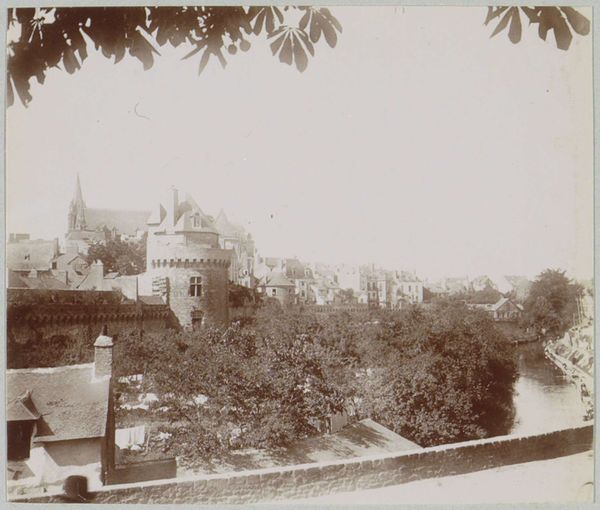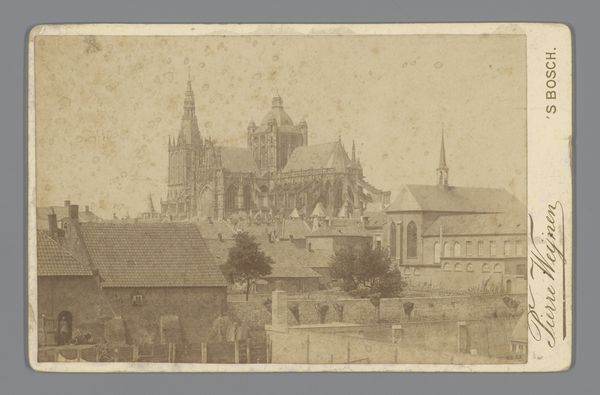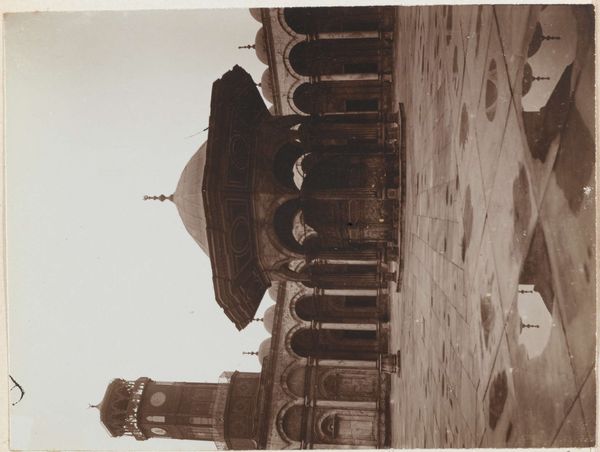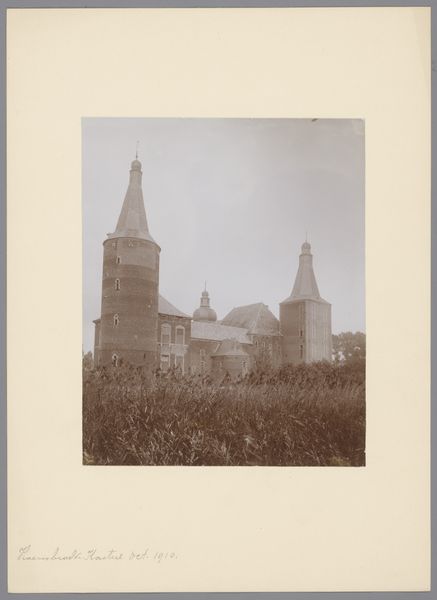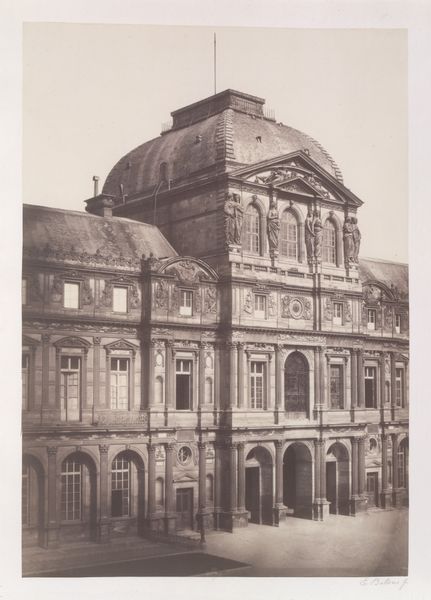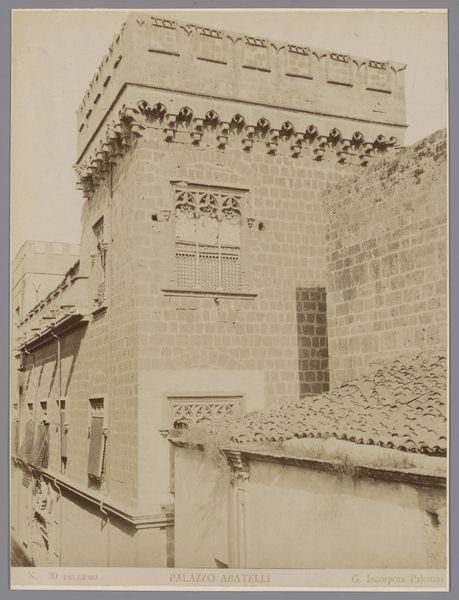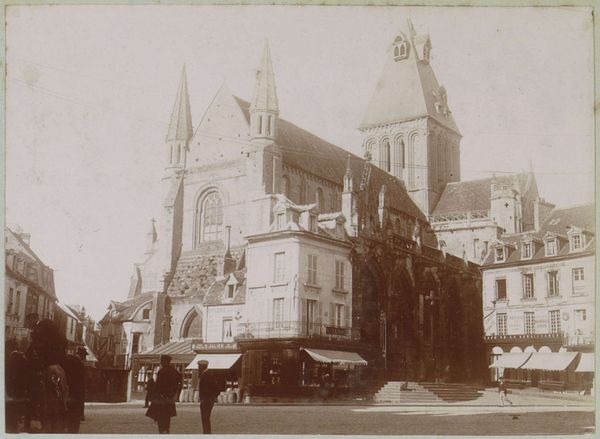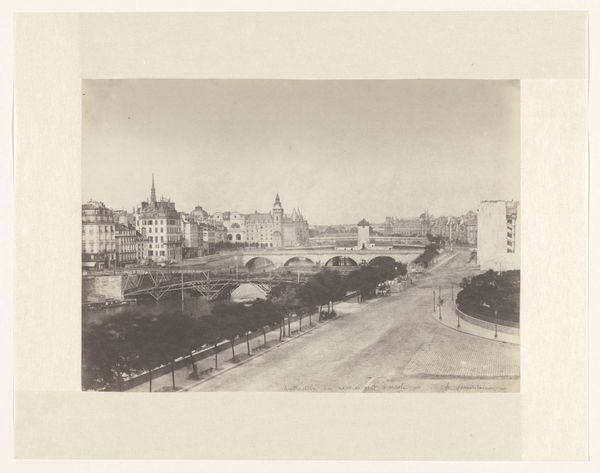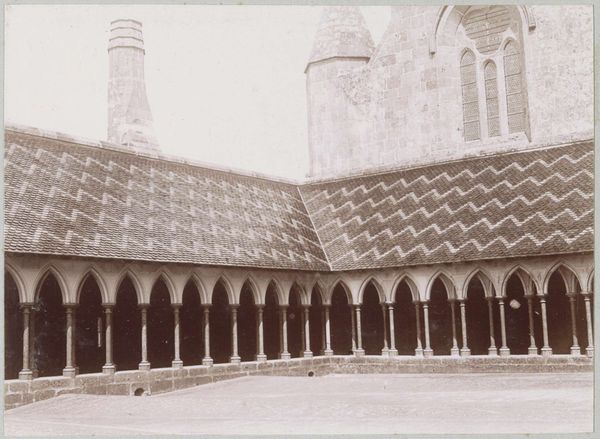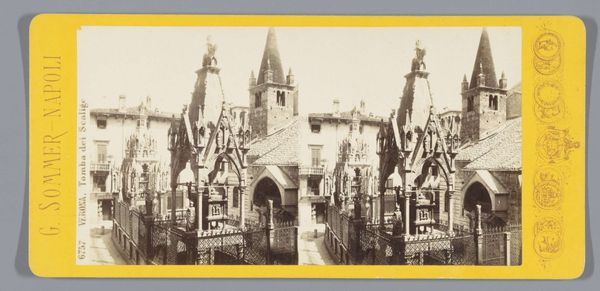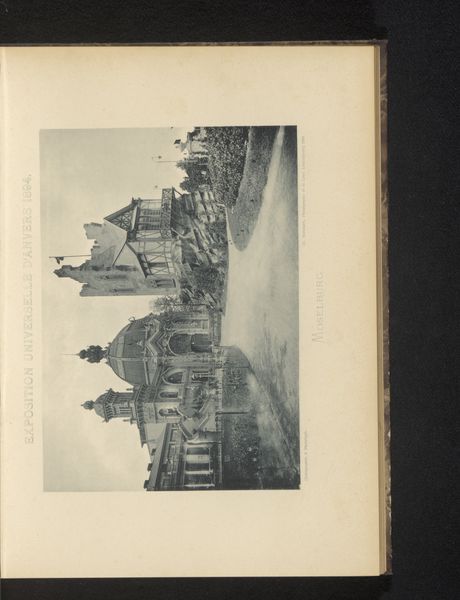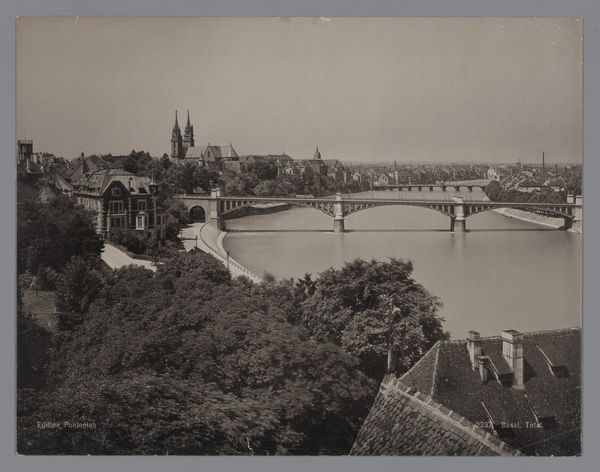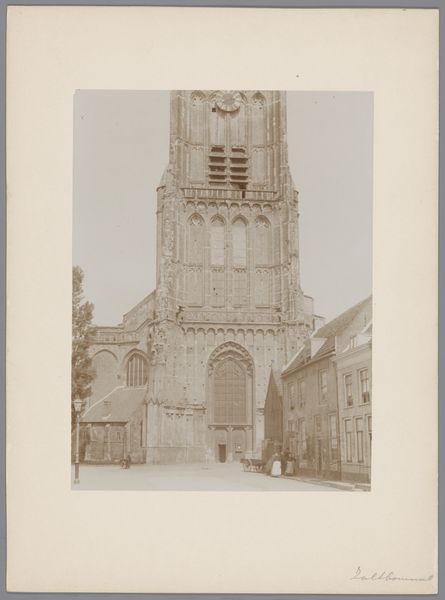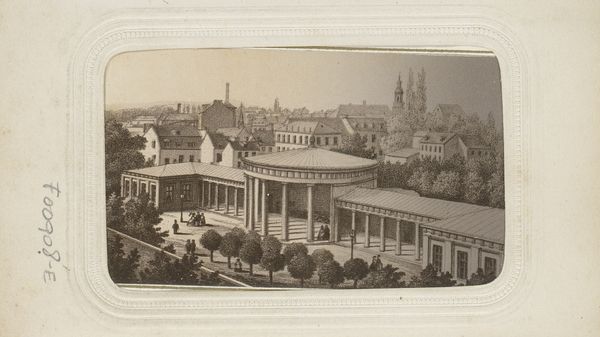
#
print photography
#
wedding photograph
#
photo restoration
#
wedding photography
#
outdoor photo
#
archive photography
#
historical photography
#
digital photo altering
#
couple photography
#
celebration photography
Dimensions: image: 6.2 x 9.2 cm (2 7/16 x 3 5/8 in.) sheet: 7.5 x 10.5 cm (2 15/16 x 4 1/8 in.)
Copyright: National Gallery of Art: CC0 1.0
Editor: This is Robert Frank's photograph, "Architecture," taken sometime between 1941 and 1945. It has this wonderful, slightly hazy, old print quality to it. The chimney in the foreground is so prominent and dark against the background buildings, it makes me wonder: how do you interpret this work through a formalist lens? Curator: I see a meticulously structured composition predicated on tonal contrast and receding planes. The photographer juxtaposes the imposing dark mass of the chimney with the delicate, grayed-out cityscape. This strategic placement creates depth and draws the eye through the visual field, prompting an exploration of textures—rough brick against smooth sky. Note how Frank manipulates the contrast and the greyscale tones of the image to evoke an uncanny atmosphere. Editor: So, you're saying the success of the photo is mostly down to how he arranged the shapes and tones within the frame? Curator: Precisely. The chimney's stark silhouette and solidity offer a counterpoint to the ethereality of the architecture beyond. The photograph gains complexity through these carefully balanced elements, irrespective of historical contexts. Observe also the cropping - its effect focuses on those elements within the frame, the geometric forms in this composition. How else could we achieve that focus without that technique? Editor: I guess the dark foreground also really pushes the other details further away into the background, making them seem even more distant. It's pretty effective. It makes the frame look crowded while simultaneously highlighting separate architectural forms in that array. Curator: The deliberate organization and interplay between forms within a visual space generates the meaning, not from narrative symbolism. This work embodies such tenets beautifully. Editor: I've never really thought about just *seeing* what is literally presented. It's interesting to consider only how the structural components create effect, separate from other considerations. Thanks.
Comments
No comments
Be the first to comment and join the conversation on the ultimate creative platform.
